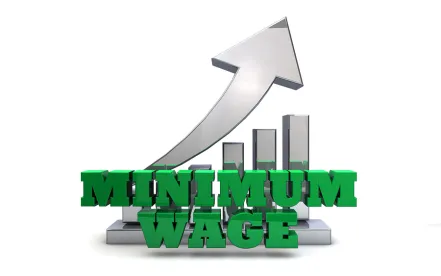On January 1, 2020, Arizona’s minimum hourly wage rate increased from $11.00 to $12.00 per hour. The increase is the final of three statutory increases to the minimum wage rate under Arizona’s Fair Wages and Healthy Families Act. Beginning January 1, 2021 and annually thereafter, the Arizona minimum wage rate will be adjusted according to a federal inflation gauge called the Consumer Price Index (“CPI”) for All Urban Consumers.
Colorado’s minimum hourly wage rate also increased on January 1, 2020 to $12.00 per hour. As the 2019 minimum wage rate in Colorado was $11.10 per hour, the increase to Colorado’s minimum wage rate was slightly less than the $1 rise seen in Arizona. Similar to Arizona, the 2020 increase to Colorado’s minimum wage rate was the last of three increases required by an amendment to the Colorado Constitution. Beginning January 1, 2021 and annually thereafter, Colorado’s minimum wage rate will be adjusted according to the CPI used for Colorado.
The Fair Labor Standards Act also establishes a federal minimum wage rate. However, employers across the country are bound to pay the higher of the applicable federal, state, or local minimum wage rate. The federal minimum wage rate in 2020 will continue to be substantially lower than the state minimum wage rate in both Arizona and Colorado. In particular, the federal minimum wage rate will remain at $7.25 per hour in 2020, as compared to the new Arizona and Colorado minimum wage rate of $12.00 per hour. Notably, the citywide minimum wage rates in Flagstaff, Arizona and Denver, Colorado for 2020 require local employers to pay their hourly wage rate employees at higher rates than the applicable state minimum wage rate.
The typical minimum wage employee in Arizona and Colorado works in the service industry. Employers in the service industry have responded to minimum wage increases by raising the prices their clients or customers pay for the goods and services they provide, reducing employees’ hours, eliminating jobs, and exploring automation efforts. Economists and observers believe that increased minimum wage rates negatively affect the total number of jobs available in certain sectors of the service industry. For example, as the Arizona minimum wage rose in 2017 and 2018 (the most recent years for which this data is available), the federal Bureau of Labor Statistics reported the number of combined food-service workers and waiters and waitresses in Arizona declined. Most economists and observers expect this trend to continue.
Moreover, the rising minimum wage rate places pressure on employers to raise the wages and salaries of other, higher paid employees in order to keep pace with the wage increases employers are required to provide to their lower-wage earners. The increase in Arizona and Colorado’s minimum wage rate requires employers with employees who are being paid the applicable minimum wage to decide whether to retain those employees at the higher rate that applies in 2020. Employers may also want to consider whether to implement other changes to their operations or compensation structure. Additionally, the increase requires all employers to change the posted minimum wage notice they are statutorily required to display, in a form prescribed by the state agencies charged with enforcing wage and hour laws, in the common areas of establishments in which their employees work and where their other employment notices are posted.




 />i
/>i
